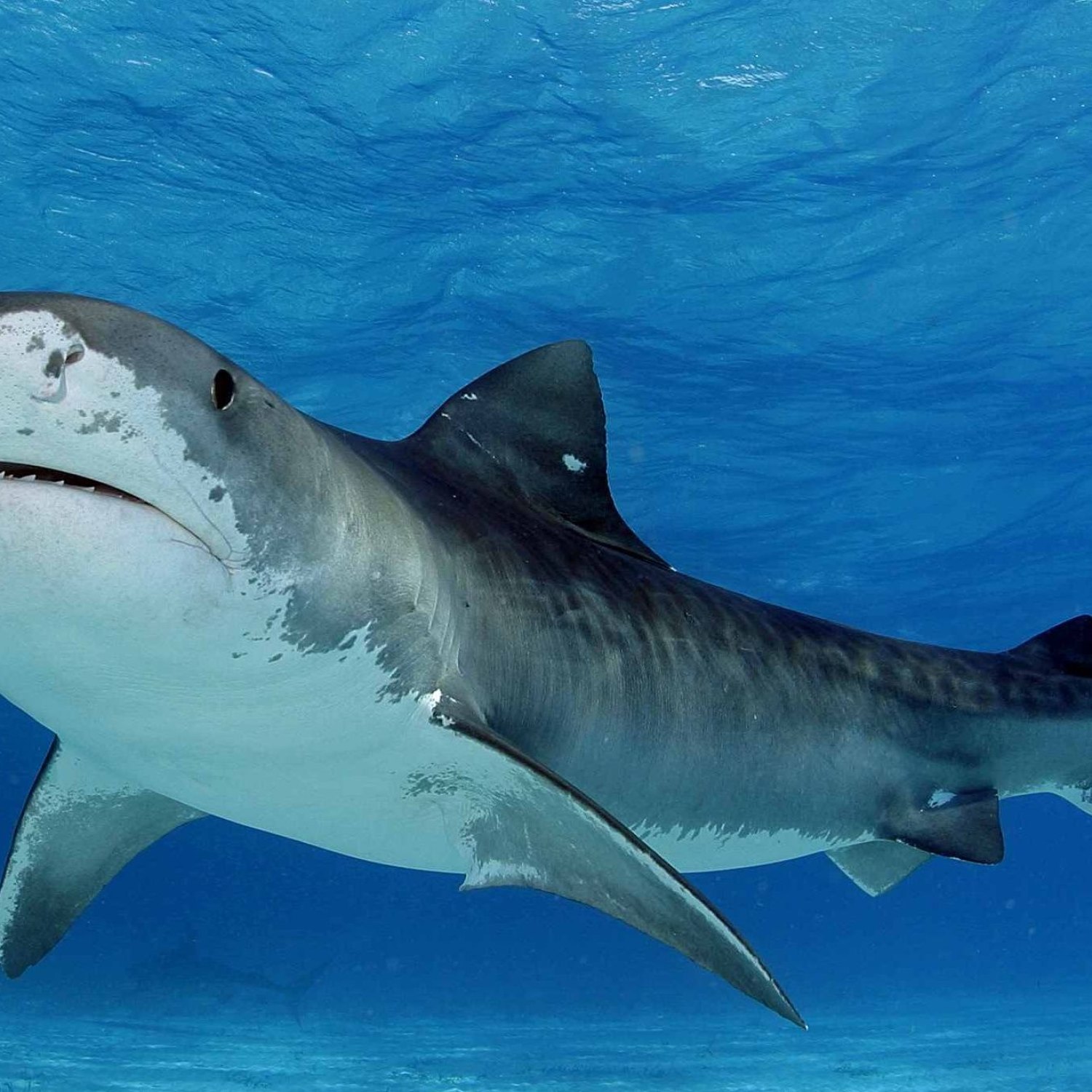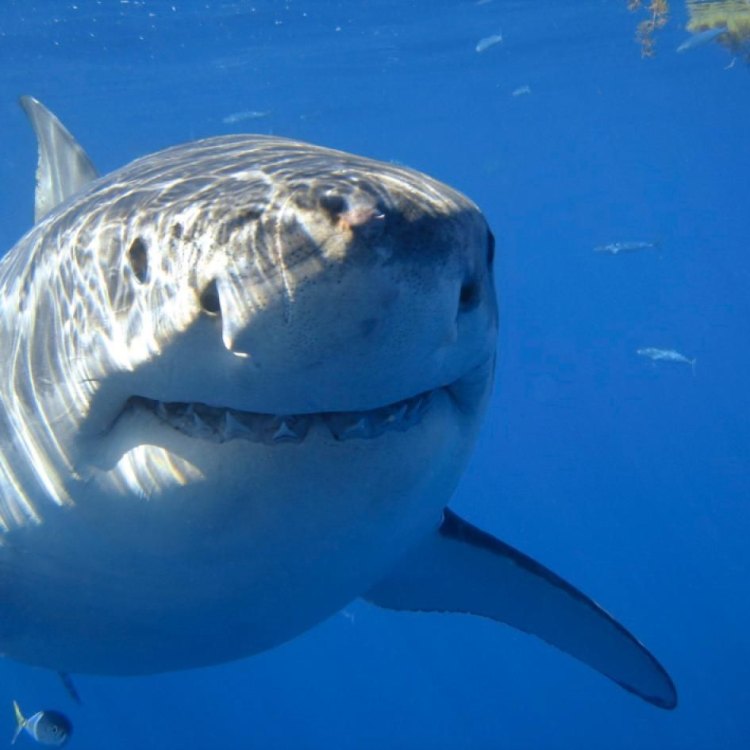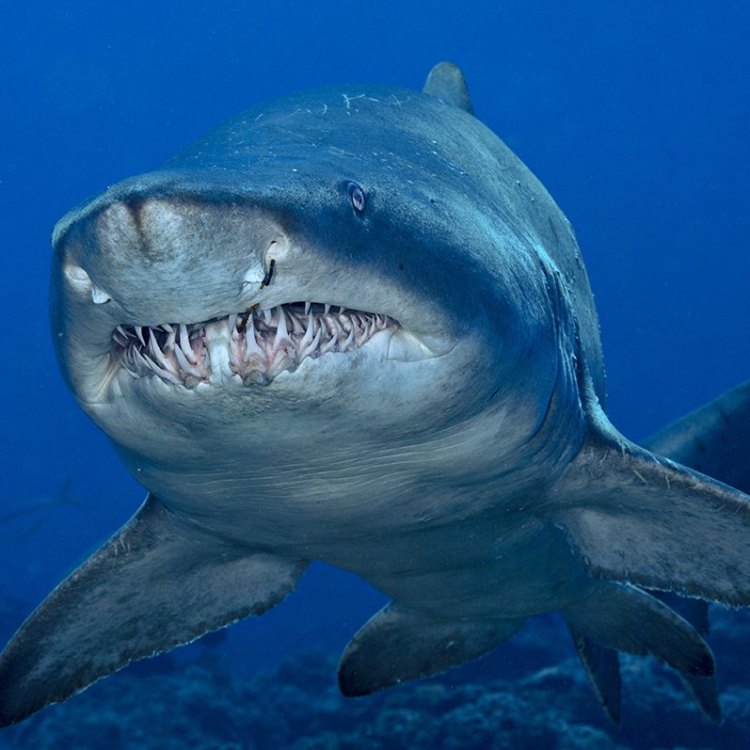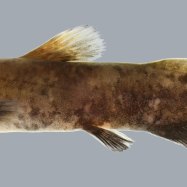
Shark
4.6 to 6.4 meters
Sharks are fascinating creatures found in coastal areas around the world. Belonging to the Lamnidae family, they can grow up to 6.4 meters in length, with a streamlined and torpedo-shaped body. With their powerful presence, it's no wonder they are often feared by swimmers, but these magnificent creatures play a crucial role in maintaining the balance of our marine ecosystems. So, let's appreciate and respect sharks for their unique characteristics. #Sharks #CoastalLife #MarineEcosystem #Lamnidae
Animal Details Summary:
Common Name: Great White Shark
Kingdom: Animalia
Habitat: Marine
The Majestic Great White Shark: An Apex Predator of the Oceans
The Great White Shark, also known as Carcharodon carcharias, is a fascinating creature that has captured the imaginations of people for centuries. From books and movies to documentaries and news reports, this magnificent animal has been portrayed as a feared predator and a symbol of power and strength. However, there is much more to this species than meets the eye. In this article, we will dive deep into the world of the Great White Shark and explore its incredible features, behavior, and importance in the marine ecosystem Shark.A Royal Name for a Royal Creature
The scientific name of the Great White Shark, Carcharodon carcharias, is a combination of two Greek words: karcharos, meaning "sharp" or "jagged," and odous, meaning "tooth." It is no surprise that the shark earned such a fierce name, given its razor-sharp teeth that are designed for hunting and tearing prey into pieces. The common name, on the other hand, refers to its coloration. This mighty predator is mostly grey, with a distinct white underbelly, which helps it blend into the ocean's depths and surprise its prey from below.A Powerful Member of the Animal Kingdom
The Great White Shark belongs to the Animalia kingdom, which encompasses all living things that are multicellular and have the ability to move on their own. It is a member of the Chordata phylum, which includes animals with a notochord, a flexible rod that runs along the length of their body and provides support. The shark also belongs to the Class Chondrichthyes, which refers to animals with skeletons made of cartilage rather than bone. This makes the Great White Shark a distant relative of creatures such as rays, skates, and other sharks.Top Predator of the Oceans
The Great White Shark belongs to the order Lamniformes, which consists of five different families of sharks Shollie. However, it is part of the Lamnidae family, which includes other apex predators such as the mako shark and the porbeagle shark. This family of sharks has been around for over 400 million years, making them one of the oldest and most successful predatory species on Earth.A Marine Beauty
The Great White Shark thrives in marine habitats, making its home in oceans worldwide. It is a highly adaptable creature, and you can find it in different climates and water temperatures, from tropical to temperate waters. As long as there is a sufficient food supply, this magnificent animal can survive in various environments, making it one of the most widespread sharks in the world.A Carnivorous Lifestyle
As a predator, the Great White Shark's feeding method is carnivorous, meaning it primarily feeds on other animals. Its diet consists mainly of fish, such as tuna, mackerel, and other smaller prey. However, this shark is an opportunistic feeder, and it also feeds on mammals, seabirds, and even other sharks. One unique feature of the Great White Shark is that it is one of the few species that can take down large marine mammals, including seals and sea lions. Its hunting strategy is to ambush its prey from below, using its powerful jaws and sharp teeth to deliver a fatal bite.A World Explorer
The Great White Shark has a vast geographical distribution, with sightings reported in all the world's oceans. From the Pacific to the Atlantic and Indian Oceans, this creature has captured the imagination of marine enthusiasts worldwide. However, it typically prefers coastal areas as its hunting ground, swimming near the surface or in shallow waters. This behavior is why the Great White Shark is often referred to as a "near-shore shark."A Citizen of the World
While the Great White Shark is a well-known and beloved creature, its exact country of origin is unknown. However, researchers have traced its roots back to 400 million years and believe it may have originated from the coasts of Australia, South Africa, or the Mediterranean. Its widespread distribution and the different subspecies found in various parts of the world point to a complex evolutionary history, but one thing is sure – this shark is a global citizen, and no one country can claim sole ownership of it.Streamlined for Speed and Efficiency
One of the most impressive features of the Great White Shark is its body shape. Its streamlined and torpedo-shaped body allows it to move effortlessly through the water, reaching speeds of up to 25 miles per hour. This body shape, coupled with its powerful muscles, makes it an incredibly efficient swimmer – a crucial factor for a predator that often chases its prey.A Force to Be Reckoned With
The size and strength of the Great White Shark are awe-inspiring. On average, an adult shark measures between 4.6 to 6.4 meters in length, which is roughly equivalent to 15 to 21 feet. Its weight can range from 1600 to 2400 kg, or 3500 to 5300 pounds. However, these measurements are not set in stone as the Great White Shark can grow much larger – the largest recorded specimen was estimated at around 8 meters or 26 feet.A Vital Role in the Ecosystem
The Great White Shark is not just an apex predator; it also plays a critical role in maintaining the balance of the marine ecosystem. This species helps control the population of its prey, preventing them from overpopulation and damaging the ocean's delicate food chain. It also helps maintain healthy stocks of various fish species that we depend on for food, making it a crucial player in the circle of life.An Endangered Species
Despite its enormous size and powerful presence, the Great White Shark is under threat. Due to overfishing and illegal hunting, its population has drastically declined, leading to the species being classified as "vulnerable" on the IUCN Red List. In some parts of the world, it is entirely protected, and killing one can result in severe penalties. Efforts to preserve the species are ongoing, and education and conservation efforts are crucial in ensuring its survival for future generations.Conclusion
The Great White Shark is much more than a fearsome creature; it is a majestic and essential species that has roamed the oceans for millions of years. Its resilience, adaptability, and role in the ecosystem make it a crucial part of our planet's biodiversity. While the Great White Shark may have a powerful image, understanding and respecting this animal is essential in ensuring its survival. So let us continue to be in awe of its remarkable features, but also strive to protect it and the oceans it calls home.

Shark
Animal Details Shark - Scientific Name: Carcharodon carcharias
- Category: Animals S
- Scientific Name: Carcharodon carcharias
- Common Name: Great White Shark
- Kingdom: Animalia
- Phylum: Chordata
- Class: Chondrichthyes
- Order: Lamniformes
- Family: Lamnidae
- Habitat: Marine
- Feeding Method: Carnivorous
- Geographical Distribution: Oceans worldwide
- Country of Origin:
- Location: Coastal areas
- Animal Coloration: Grey with white underbelly
- Body Shape: Streamlined and torpedo-shaped
- Length: 4.6 to 6.4 meters

Great White Shark
- Adult Size: Up to 6.4 meters
- Average Lifespan: Up to 70 years
- Reproduction: Sexual
- Reproductive Behavior: Internal fertilization
- Sound or Call: None
- Migration Pattern: Yes
- Social Groups: Solitary
- Behavior: Apex predator, known for its feeding behavior
- Threats: Habitat loss, overfishing, bycatch
- Conservation Status: Vulnerable
- Impact on Ecosystem: Regulates prey populations, maintains balance in marine ecosystems
- Human Use: Research, ecotourism
- Distinctive Features: Large size, sharp teeth, dorsal fin
- Interesting Facts: Can swim up to 56 km/h (35 mph), highly skilled hunters
- Predator: None

Carcharodon carcharias
The Fascinating World of Sharks and their Impact on Our Ecosystem
When we think of sharks, the images of sharp teeth and the ominous "Jaws" theme song often come to mind. After all, these apex predators are notorious for their feeding behavior and are often portrayed as ruthless killers in popular media. However, there is much more to these creatures than what meets the eye.Sharks, with their distinctive features and powerful presence, have captured our fascination for centuries PeaceOfAnimals.Com. From their massive size to their impressive speed and hunting abilities, they have long been the subject of awe and fear. Yet, beyond their notoriety, there is a whole world of fascinating facts and unique features that make sharks essential to our marine ecosystems.
Let's dive deeper into the world of sharks and explore their behavior, impact on the ecosystem, and the conservation efforts being made to protect these magnificent creatures.
The Mighty Shark: Adult Size and Lifespan
Sharks come in various shapes and sizes, with the largest species being the whale shark, which can reach an incredible length of up to 18 meters (60 feet). However, on average, sharks grow to about 6.4 meters (21 feet) in length, making them one of the largest predators in the ocean.When it comes to lifespan, sharks are known to live long lives, with some species living up to 70 years. This impressive lifespan is due to their slow growth and late sexual maturity. Sharks have a slow growth rate, with some species taking over a decade to reach sexual maturity Sei Whale. This unique characteristic plays a vital role in their conservation, as it makes them more vulnerable to overfishing and habitat loss.
The Secretive Reproduction of Sharks
One of the most distinctive features of sharks is their mode of reproduction. Unlike most fish that lay eggs, sharks are ovoviviparous, which means they give birth to live young. However, their reproductive process is slightly different from mammals.Sharks engage in internal fertilization, where the male uses specialized reproductive organs called claspers to transfer sperm into the female's reproductive tract. The female then carries the developing embryos inside her until they are ready to be born. This unique form of reproduction allows the female to give birth to a small number of well-developed young, increasing their chances of survival.
The Silent Predators: Sound or Call
When we think of marine animals, the first thing that comes to mind is the sound of whales singing or dolphins chattering. However, sharks are not known for any vocalization techniques. They lack vocal cords and do not produce any sound or call.This silent characteristic plays a vital role in their hunting abilities, allowing them to approach their prey stealthily. It also helps them avoid detection from predators, making them highly skilled hunters in the world's oceans.
The Nomadic Lifestyle: Migration Patterns and Social Behavior
Many species of sharks are known for their migration patterns, where they travel long distances in search of food or warmer waters. Some species, like the great white shark, are known to migrate across entire oceans.However, despite their nomadic lifestyle, sharks tend to be solitary creatures, only coming together for mating purposes or when they are competing for food. They do not exhibit social behaviors like dolphins or whales, making them independent and elusive creatures.
The Fearsome Predator: Feeding Behavior and Impact on Ecosystem
When it comes to feeding, sharks have a well-deserved reputation as apex predators. They are at the top of the food chain, playing a crucial role in regulating prey populations and maintaining the balance in marine ecosystems.Sharks have a diverse diet, with some species feeding on fish, others on smaller sharks, and some on marine mammals like seals and sea lions. Their sharp teeth and powerful jaws allow them to devour their prey in one bite, making them highly skilled hunters and fierce predators.
The Vulnerable Shark: Threats and Conservation Status
Despite their fearsome reputation, sharks are facing increasing threats from human activities. Habitat loss, overfishing, and bycatch are the leading causes of the decline in shark populations.Sharks are often caught accidentally as bycatch in fishing operations targeting other species. They are also targeted for their fins, which are considered a delicacy in some parts of the world. This practice, known as "finning," involves cutting off the shark's fins and discarding the rest of the body, causing significant harm and disrupting the balance of the ecosystem.
As a result of these threats, many shark species are now listed as vulnerable on the International Union for Conservation of Nature (IUCN) Red List. Conservation efforts are being made worldwide to protect these creatures, including the creation of marine protected areas and implementing sustainable fishing practices.
The Human Use of Sharks: Research and Ecotourism
Aside from their ecological importance, sharks also play a crucial role in human activities. They are essential to scientific research, helping us understand the dynamics of marine ecosystems and the impact of human activities on them. With their long lifespan and slow growth rate, studying sharks can provide valuable insight into the health of our oceans.Furthermore, sharks have also become a popular attraction in ecotourism. Many people are fascinated by the opportunity to see these magnificent creatures up close in their natural habitat. This form of responsible tourism generates economic benefits for local communities and promotes the conservation of shark species.
The Unique Features of Sharks: Size, Teeth, and Dorsal Fins
Sharks have several distinctive features that make them stand out in the oceans. Their large size, sharp teeth, and dorsal fin are just a few of the features that make them unique.Their large size, coupled with their powerful and sleek bodies, allows them to glide effortlessly through the water, reaching impressive speeds of up to 56 km/h (35 mph). Their sharp teeth are perfectly adapted for capturing and consuming prey, with some shark species having up to 300 teeth at any given time. And of course, who can forget the iconic dorsal fin that emerges from the water, signaling the presence of these majestic creatures.
In Conclusion
Sharks are more than just the "villains" of the ocean; they are essential to the health and balance of marine ecosystems. From their size and unique reproductive behavior to their impressive hunting abilities and impact on the ecosystem, sharks are masters of their domain.However, the increasing threats to their survival and well-being call for urgent conservation efforts to protect these fascinating creatures. As humans, it is our responsibility to ensure that these vital predators continue to thrive in our oceans for generations to come. So, the next time you think of sharks, remember their importance and incredible features beyond their infamous notoriety.

The Majestic Great White Shark: An Apex Predator of the Oceans
Disclaimer: The content provided is for informational purposes only. We cannot guarantee the accuracy of the information on this page 100%. All information provided here may change without prior notice.












